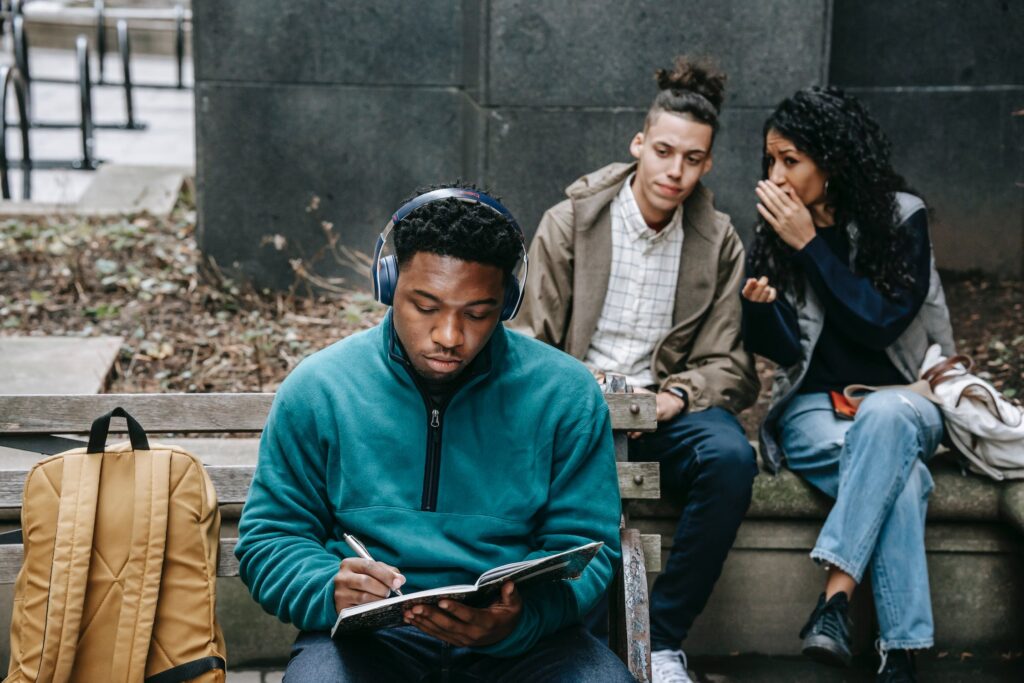
Stereotypes about you are one thing, but what about the stereotypes that you believe in about other people? For the same reasons the generalized ideas about the type of person you appear to be can be harmful to you in a variety of ways, the same kinds of ideas applied outward can harm the folks around you or harm you because of the assumptions you have made about them. It’s why we work so hard to break biases, because we know that individuals should be evaluated as the complicated beings they are, with all of the parts that fit and don’t fit into what the world expects of them. It’s not just good for personal relationships and business interactions, though. It’s important to be careful with how we stereotype when it comes to figuring out whether someone is a danger to us or not.
Superficially, stereotypes seem like a great way to make snap decisions about whether we can trust someone to not hurt us. Even if we aren’t relying solely on our own experiences, we can dig up all sorts of statistics and studies about the majority gender, race, and other characteristics of violent offenders in particular. Whether we’re concerned about the kinds of people who might become abusers, the suspicious strangers we spot when we’re walking out and about, or some other kind of attacker, there certainly appear to be trends about what bad guys seem to look like. The key phrase in there is “appear to be,” though. For many reasons, those stereotypes are not necessarily reliable. Some of them aren’t based on statistics at all, versus some sort of “common wisdom” that is often inherently biased towards who we want to assume are bad or evil. Those that are based on reported numbers or surveys can fail systemically, because of distortions in what kinds of crimes get reported and how they are policed and prosecuted. They also often don’t capture the lesser crimes that can still hurt us and which don’t always follow the same patterns.
Even if they could be relied on, they are still only majorities and generalizations. Say that three-quarters of all perpetrators of a certain type of crime look a certain way. What about the other quarter? That can still be a large number, and your life may be at stake if you don’t catch the bad guy while they’re still incoming, before they actually get their hands on you. After all, right next to the stereotypes of what a criminal looks like, are all of the stories about how a serial killer or other criminal were unassuming and unexpected. It’s incredibly common to hear about how nobody could have imagined them hurting a fly, even by people who can’t normally be considered ignorant or optimistic about the nature of a friend or acquaintance. With crimes committed by people who are known to the victim, it’s even more likely that the bad guy doesn’t look like the victim’s nightmares before the bad stuff started. You might also miss out on positive interactions and even getting help from someone who you think looks like a potential problem because you’ve dismissed them based on a stereotype.
Instead, I suggest basing your evaluations on more reliable and more universal criteria: behavioral clues. The most common of these are those known as pre-incident or pre-assault indicators, and can include cues like an attacker glancing away to look for potential witnesses, or making a direction change to intersect your path. Some of them may be appearance-based, but on factors like being inappropriately dressed for the setting more so than looking like a minority out of place. When the attacker is someone who you are more familiar with, there may be other red flags too. A tendency to boundary-push might not always lead to physical or other kinds of violence, but those harms are in fact very often preceded by an unwillingness to accept the victim’s right to make decisions about their life. More concerning is when there are small, almost excusable, incidents of extreme anger or apparently minor physical violence. They may be explained as a bout of temper, perhaps, and incongruent with their otherwise friendly and respectable persona. Regardless, it’s their behavior that is key far more than their looks or their background.
What a person does tells the tale over who they are. Pattern-matching the image of a villain you have in your head against the folks you run into and interact with can cause you to miss a real bad guy while unfairly profiling people who are truly innocent and harmless. You can treat someone badly who doesn’t deserve it, simply because you think they look like someone who might hurt you. Worse, you can be handicapped when it comes to defending yourself against someone hurting you, because your brain is so convinced that they don’t look like how you expect an attacker to appear. It’s not just about gender or race either, but can encompass clothing choices, tattoos, even hair color and style – all of which are unreliable signals. If, instead, you look for actions that don’t fit or that betray aggression, you’ll be better able to spot and defend yourself against true threats, and almost as importantly, articulate your actions after the fact.




